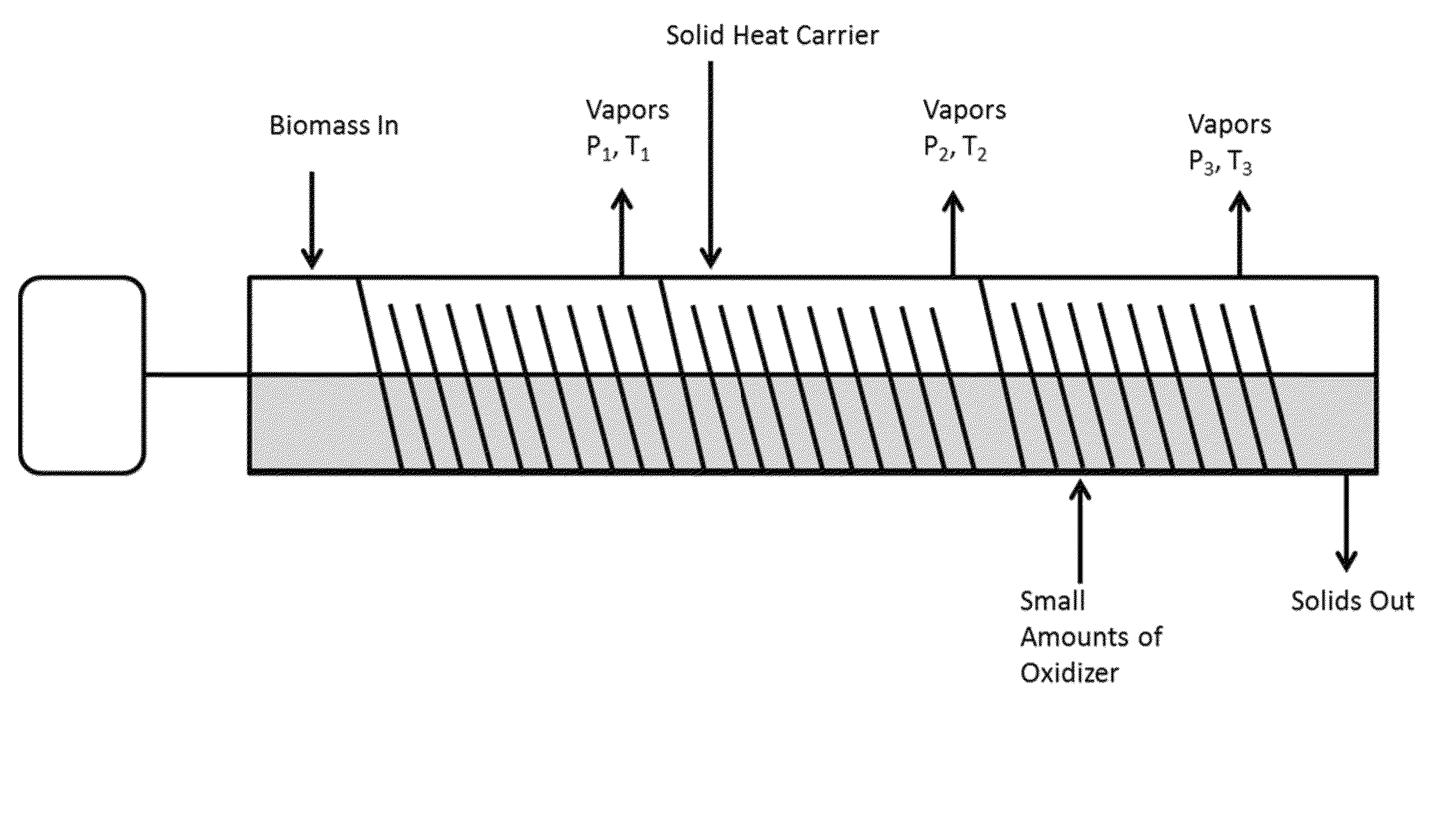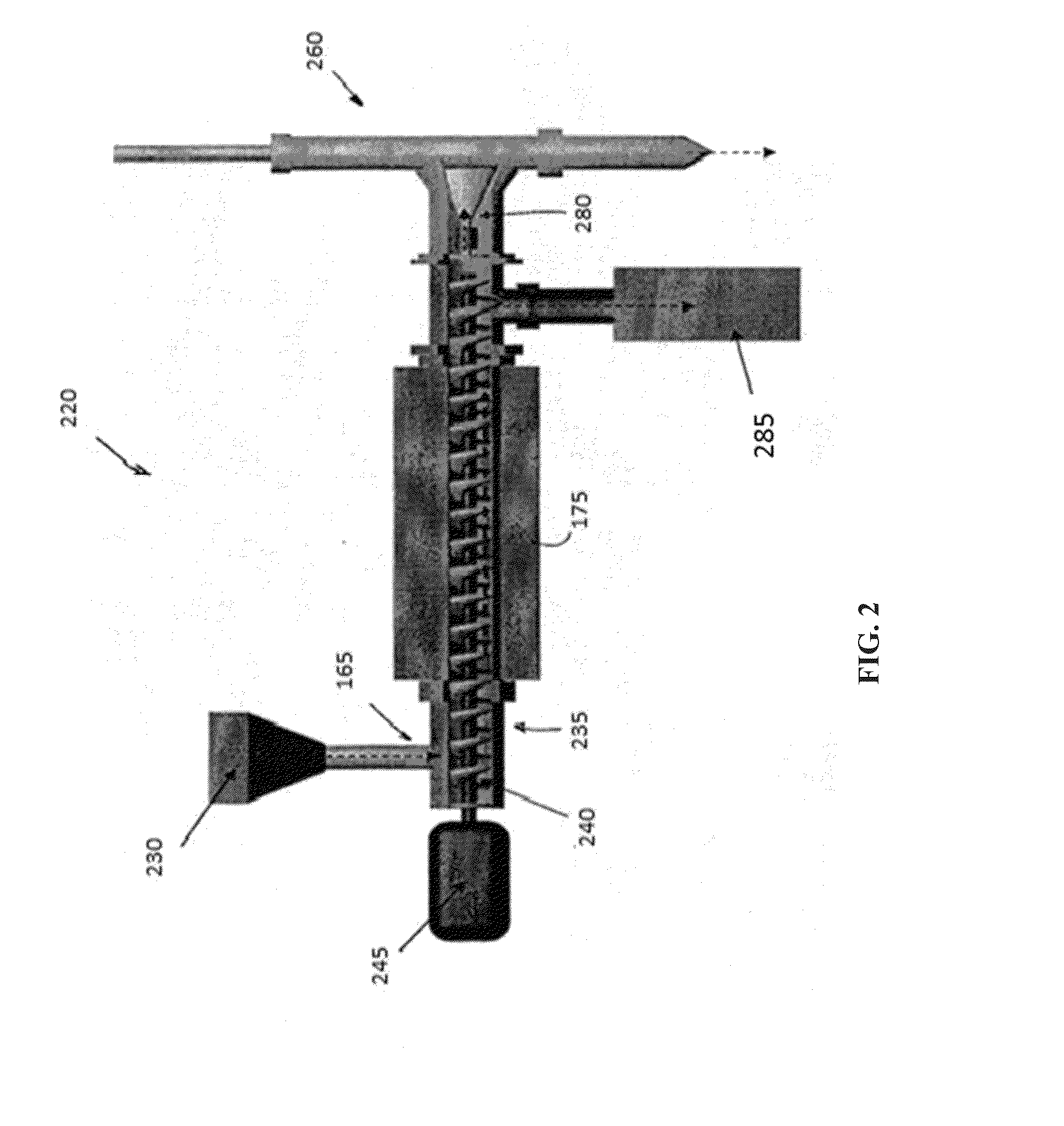Staged biomass fractionator
- Summary
- Abstract
- Description
- Claims
- Application Information
AI Technical Summary
Benefits of technology
Problems solved by technology
Method used
Image
Examples
example 1
[0132]In a series of experimental tests the staged pyrolysis benefits were tested by varying the generation temperature of the second stage vapors. Example 1 models a two stage process, in which the first stage is conducted under varying conditions to make vapors for fuel. These vapors were then directed to a catalytic process to produce fuel and several key indicators were observed. The second stage could be conducted under conditions to convert the solid stream into a biochar for soil amendment. The reaction conditions for the first stage were varied and the effect of the reaction conditions on catalyst lifetime and coke production were evaluated.
[0133]Coke yield and relative catalyst life is reported in Table 1. The table is normalized to generic mass units per hour and temperature is controlled by varying the electric heaters used in the experiment. The measured catalyst life is also normalized against “x” amount of time that fuel is produced without significant reactant breakth...
example 2
[0135]This examples illustrates a three step system where the first step produces vapors not suitable for fuel product and the second step vapors are used to make fuel. The third step is to make biochar for soil amendment. This example also shows the different use of heating methods and how pressure can be higher in the second stage (compressor).
[0136]Referring to FIG. 3, biomass, pine chips, is fed into the feeding system at point 165 and introduced into the first auger. The auger is heated externally such that the internal temperature is 160° C. (320° F.) and the pressure is at atmospheric. The vapor product is primarily water and is withdrawn from port 361 on 321 and sent to a water treatment stage.
[0137]In this example the solids are also introduced into a second auger via a feeding system 166. Heated steel shot are fed through the feeding system at point 176 on 322 and introduced into the second auger. The second auger 322 operates at a pressure of 60 psig by the introduction o...
example 3
[0140]This example shows a three step system in which the heating of the middle stage is accomplished using electricity through the shaft.
[0141]Referring again to FIG. 3, biomass such as pine chips are fed into the feeding system at point 165 and introduced into the first auger. The auger is heated externally such that the internal temperature is 250° C. (480° F.) and the pressure is at atmospheric. The vapor product is primarily water and acetic acid and is withdrawn from port 361 on 321 and sent to another process. There are several processes that might use the acetic acid, such as a neutralization process in a water treatment step. As noted previously, removal of acetic acid at this stage helps reduce coking during fuel production. This ensures that the vapor stream generated at the lower temperatures are not sent to the catalytic process where said acetic acid is known reduce operation time of the catalyst but rather said vapors may be used for a separate beneficial process.
[014...
PUM
 Login to View More
Login to View More Abstract
Description
Claims
Application Information
 Login to View More
Login to View More - R&D
- Intellectual Property
- Life Sciences
- Materials
- Tech Scout
- Unparalleled Data Quality
- Higher Quality Content
- 60% Fewer Hallucinations
Browse by: Latest US Patents, China's latest patents, Technical Efficacy Thesaurus, Application Domain, Technology Topic, Popular Technical Reports.
© 2025 PatSnap. All rights reserved.Legal|Privacy policy|Modern Slavery Act Transparency Statement|Sitemap|About US| Contact US: help@patsnap.com



